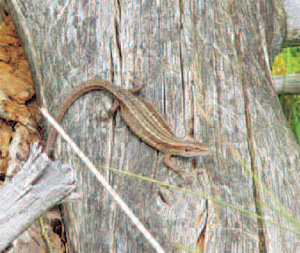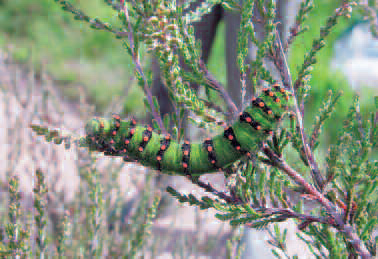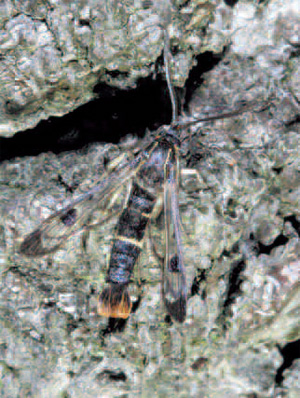The Wildlife of Cannock Chase
An outstanding wildlife habitat
In 1957 the 3rd Earl of Lichfield gifted over 2,000 acres of the
north-west part of Cannock Chase to Staffordshire County
Council. This is the main area of today’s Cannock Chase
Country Park. Its 5 square miles (1300 hectares) make it one
of the largest Country Parks in Britain.
In 1958 Cannock Chase received national recognition as an
Area of Outstanding Natural Beauty (AONB). At only 26
squares miles (6,800 hectares), it is the smallest AONB in
mainland Britain.
Large parts of the Country Park and other areas of Cannock
Chase are a Site of Special Scientific Interest (SSSI). Part of
the SSSI is also a designated Special Area of Conservation
(SAC), in recognition of its status as an internationally
important wildlife habitat.
Mammals
One of the major attractions of Cannock
Chase is the ancient herd of fallow deer.
The main herd tends to remain in the
centre of Cannock Chase throughout the
year, with the males moving in from the
outlying woodlands in time for the annual
rut in October. Smaller numbers of red deer
are to be found, whilst the muntjac, hardly
bigger than a large dog, is present but is
very secretive in its habits.
The rich habitats of Cannock Chase also
provide food and shelter for foxes, badgers,
rabbits, grey squirrels, stoats, weasels, field
mice and voles.

The fox, Vulpes vulpes, can be found in both rural and urban areas
of Cannock
Chase. Foxes spend much of the day-time in their
underground home (an ‘earth’).
Photograph by Chris Blackburn.
Plant life
The underlying soils of Cannock Chase give
rise to wide expanses of open heathland
covering much of the higher ground. A rare
hybrid bilberry, known locally as the‘Cannock Chase’ berry, grows among the
heather and bracken that are dominant in
these dry areas.
In the heathland and wetland areas grasses such as
wavy hair grass, purple moor grass, fescues and cotton
grass can be found. The mires contain sphagnum or bog
moss and other species including round-leaved sundew
and marsh violet.
Traces of the ancient woodland can still be seen in the
widespread scattered oaks, especially in Brocton
Coppice, where about two hundred still survive.
Reptiles
The most common reptiles are the adder
and common lizard, which you might see
in both wet and dry places. Frogs and
toads are also common. Grass snakes and
slow worms are rarer, and seldom seen.

The common lizard, Zootoca vivipara, is widespread
on Cannock Chase but seldom seen as it is very shy.
It gives birth to live young in late summer, which are
almost black in colour and can be more easily seen
than the adults. You may be able to spot one
sunbathing on logs and the sides of paths,
particularly along the Sherbrook Valley and Oldacre
Valley.
Image courtesy of Andy Jukes
Invertebrates
Characteristic Cannock Chase butterflies include the green hairstreak and the small pearl-bordered fritillary, which is largely confined to one or two of the wetland areas. Cannock Chase has at least a dozen species of dragonfly, including the large and brilliantly coloured common and southern hawkers. The rare bog bush cricket is found on the taller grasses, while the common field, mottled and common green grasshoppers can be heard in mid and late summer.

Small pearl-bordered fritillary, Boloria selene (Clossiana
selene). During its time as a caterpillar, it feeds mainly
on marsh violet, Viola palustris
Image courtesy of Andy Jukes
|

The emperor moth, Saturnia pavonia, is a large moth. The males
can be seen flying fast over the heathland during the day time
in April and May. This caterpillar will spend the winter as a pupa
inside a cocoon and the adult moth will emerge in April
Image courtesy of Andy Juke

The Tachina grossa is a large fly the size of a bumblebee.
They
are common in certain parts of Cannock Chase. Their young are
a parasite of large hairy caterpillars, in which their larvae
develop
Image courtesy of Andy Jukes

The welsh clearwing, Synanthedon scoliaeformis. This
elusive day-flying
moth was previously thought to be
extinct on Cannock Chase, but was rediscovered just a
few years ago
Image courtesy of GC Slawson
Birds
Many familiar garden species of bird, such as thrush
and robin can be found on Cannock Chase. Woodland
birds include the solitary woodcock, greater spotted
and lesser spotted woodpecker, treecreeper, crossbill
and nuthatch. Goldcrest and great, blue, coal, marsh,
willow and long tailed tits and sparrowhawks and
tawny and long-eared owls may also be seen.
Wetland areas attract wagtails, reed bunting,
kingfishers, mallard, coot, teal, little grebe and heron.
On the heathlands, yellowhammer and linnet inhabit
the scrubby areas, and, high above, skylark and
meadow pipit fill the air with song. The open
heathlands attract the occasional kestrel, short-eared
owl and hen harrier.
Migrant birds arriving in autumn and winter include
siskin and redpoll. Flocks of fieldfare and redwing are
often seen in the more open scrubby areas.
Summer brings the willow warbler, whitethroat,
chiffchaff, blackcap, garden warbler, redstart, spotted
flycatcher and wood warbler. Noteworthy species
breeding on the heathlands are stonechat, whinchat,
tree pipit, and nightjar.

The yellowhammer, Emberiza citrinella, can be found on
scrubby areas of heathland. This is a male – the female
has more subdued colours.
Photograph by Chris Blackburn

Among the noteworthy species of bird breeding on
Cannock Chase is the nightjar, Caprimulgus europaeus,
whose main stronghold in the Midlands is found on
these heathlands and on nearby forest clearfells.
Image courtesy of Gerald Downey (rspb-images.com)
|








